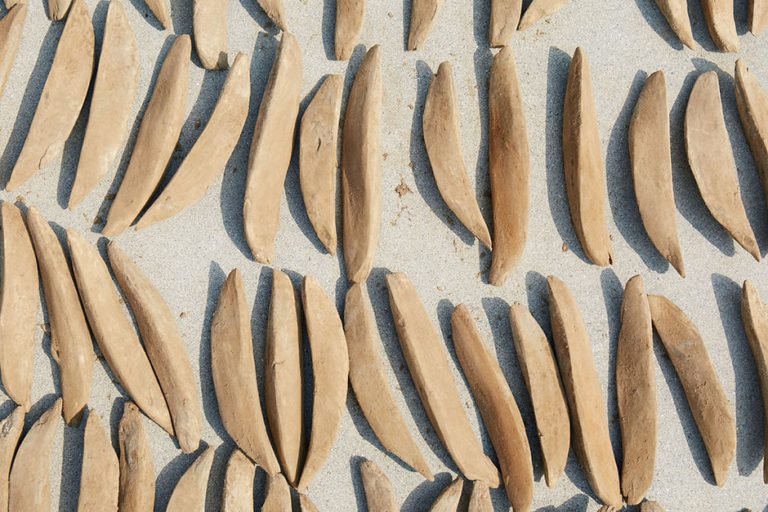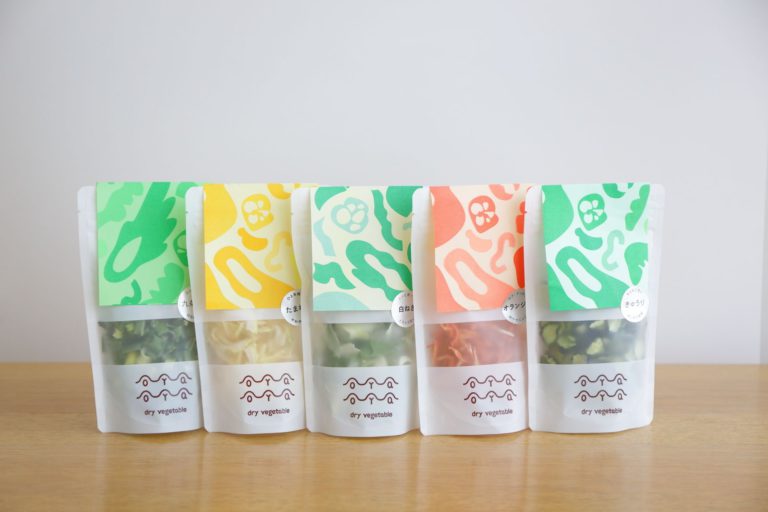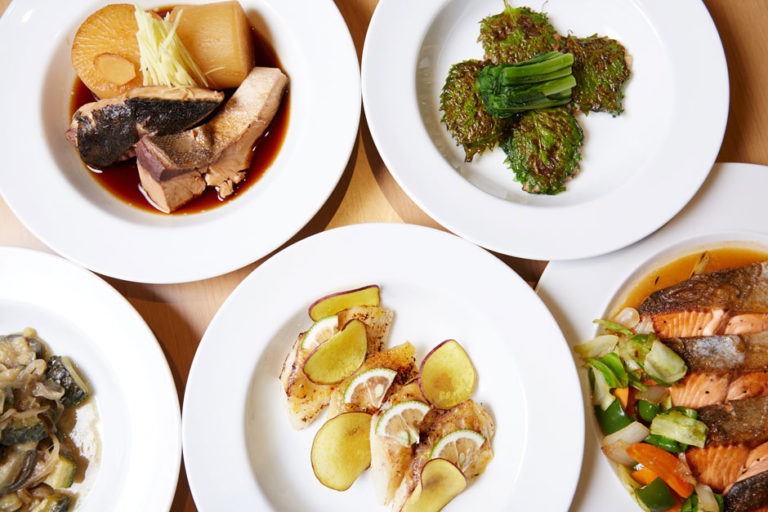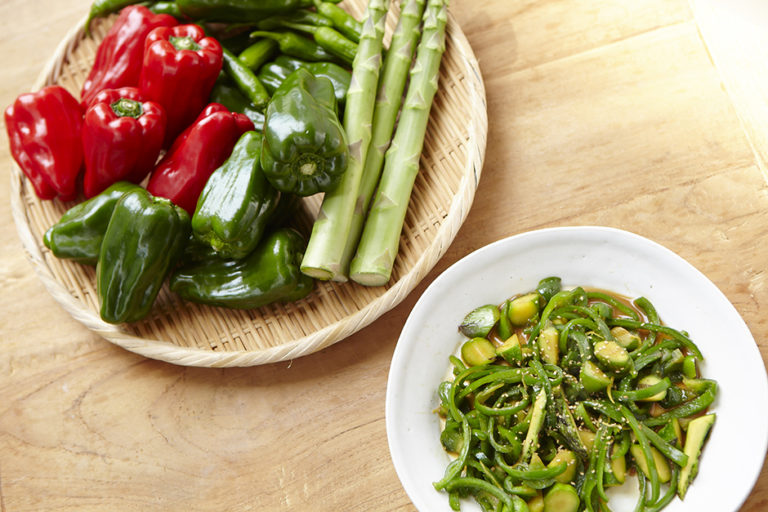Dashi stock brings out the best in seasonal produce -It takes time and effort to make good katsuobushi (shaved bonito)
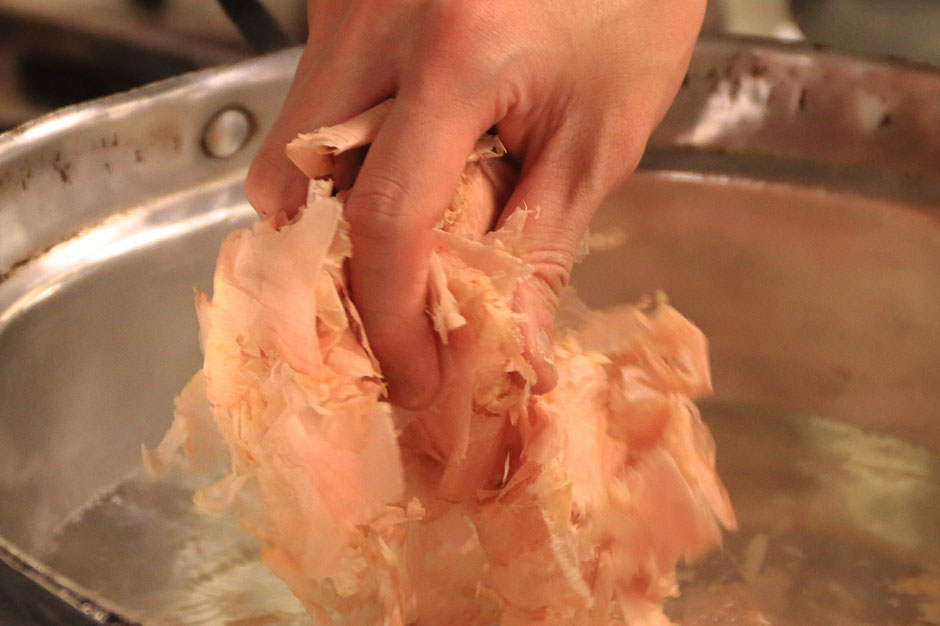
The bedrock of washoku is surely dashi, the ubiquitous Japanese broth that enhances the flavor and aroma of any dish and brings out the very best in seasonal produce.
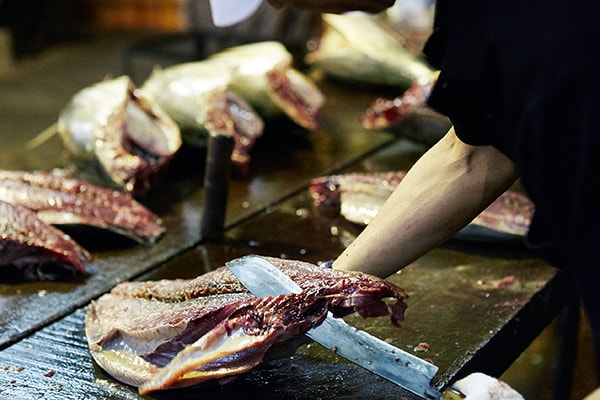
The principle ingredients of dashi are katsuobushi (shaved dried bonito), shiitake mushrooms and kombu (a particular type of seaweed). All of these have to be carefully prepared before they can be used to make the dashi. The time and care put into processes such as drying, smoking and maturing is what gives the dashi such marvelous flavor.
Katsuobushi in particular takes a great deal of preparation. First you fillet a fresh ocean bonito, removing the head and innards and cutting it in two along the backbone. Next you boil it solidly to seal the flavor in, remove the bones, shape the fillet, smoke and dry it at the same time, and finally sun-dry it to mature it with natural mold. Finally it is ready for making dashi.

It may be a painstaking process to convert fresh bonito into dried katsuobushi, but the flavor makes it all worthwhile.
Kyuemon, purveyors of the finest dashi
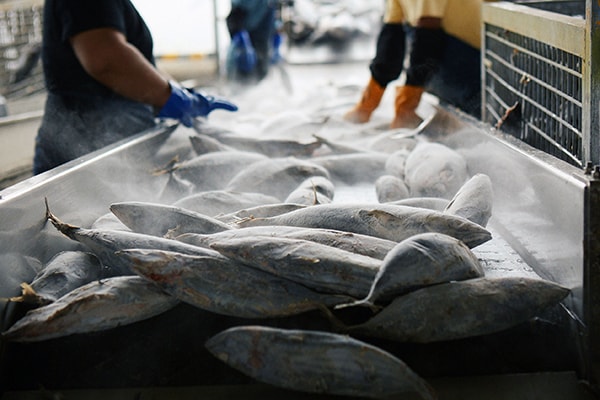
Long-established dried bonito manufacturer Hayashi-Kyuemon-Shoten, better known as simply Kyuemon, was founded in 1885 in Fukuoka. We paid a visit to Kyuemon to find out more about the wonders of katsuobushi and dashi.
Kyuemon makes katsuobushi in the city of Makurazaki in Kagoshima prefecture, the undisputed home of katsuobushi production in Japan. Bonito has been harvested in this area for more than 300 years. Freshly caught bonito is whisked away immediately for processing at factories located close to the port. Makurazaki provides the ideal environment for making katsuobushi.
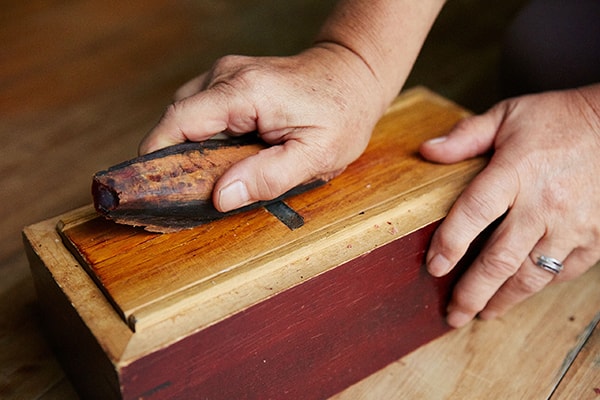
Katsuobushi tends to lose its flavor and freshness quite quickly when shaved. In the old days, every home in Japan had a special device for shaving the katsuobushi, so that it would be as fresh as possible for making the dashi. Today, thanks to improvements in shaving and storage techniques, it is possible to shave katsuobushi without losing flavor or freshness. This is why Kyuemon and other katsuobushi suppliers were commonly known as kezuribushiya, which literally translates as “shaved bonito shop.”
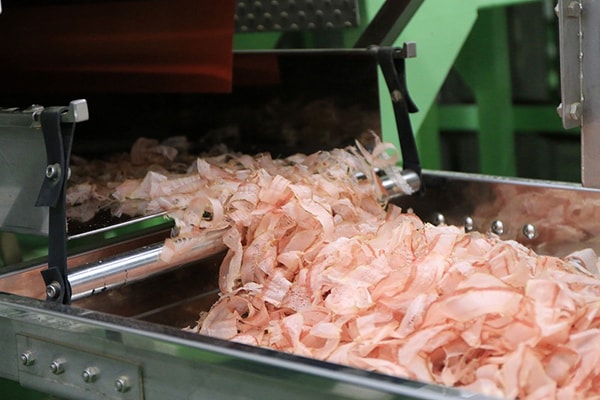
At Kyuemon, the katsuobushi shaving process is closely monitored by experienced artisans who adjust the blade as necessary. At the time of our visit, they were shaving hana-katsuo (large and thin bonito flakes) and the room was filled with the wondrous aroma of katsuobushi.
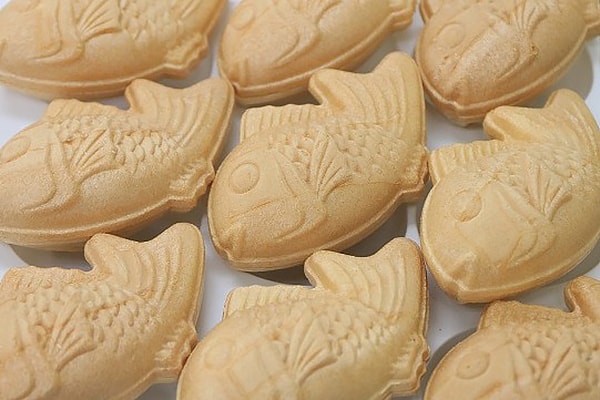
“These days, most households don’t have the time to prepare dashi from scratch,” notes Goichiro Hayashi, the fifth owner of Kyuemon. “So our mission is to find ways to bring the joy of dashi to everybody in these busy times.” Omedetai is one of their most successful products and embodies the Kyuemon mission. It is a small cake of concentrated sea bream soup made with bonito stock, formed into the shape of a sea bream. You simply pour hot water over it in order to produce delicious soup. With Omedetai, you can enjoy authentic dashi flavor in an instant. As Hayashi says, it is a product born of their commitment to promoting dashi and its significance in Japanese culture.
Kyuemon katsuobushi features at local three-star Japanese restaurant Sagano
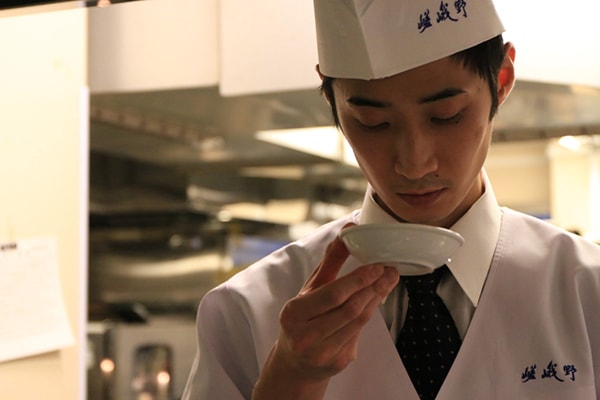
Kyuemon katsuobushi is used at Sagano, a high-end Japanese restaurant in Fukuoka with a coveted three-star rating from Michelin. Sagano prepare dashi from honkarebushi drained of blood, which is the finest form of katsuobushi, along with kombu seaweed from Rausu in Hokkaido, which is also supplied by Kyuemon.
“We tried various combinations of katsuobushi and kombu,” explains head chef Yuichi Uchiki, “but the Kyuemon katsuobushi and kombu proved to be the best.”
Uchiki is kind enough to give us a special preview of how dashi is prepared at Sagano.
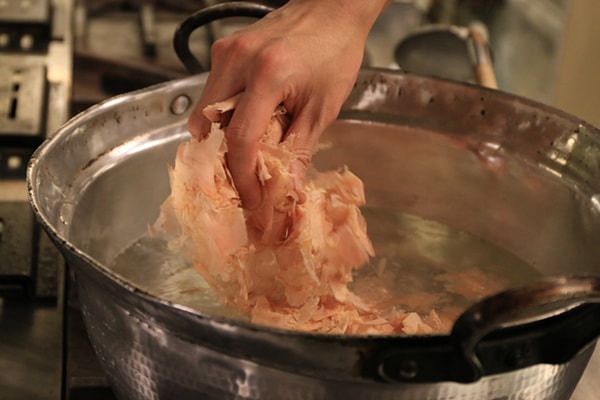
First he soaks the kombu in a pot of cold water, then turns on the heat. Once the kombu is heated through and the flavor starts to emerge, he removes it with chopsticks and sprinkles a generous serving of shaved honkarebushi over the pot. He monitors the heat carefully to ensure that the water never comes to the boil.
After a few minutes, he strains the mixture through a cotton cloth into another pot. The dashi is now complete. Watching Uchiki methodically going about the business of preparing the dashi, you realize that you are witnessing a master at work.
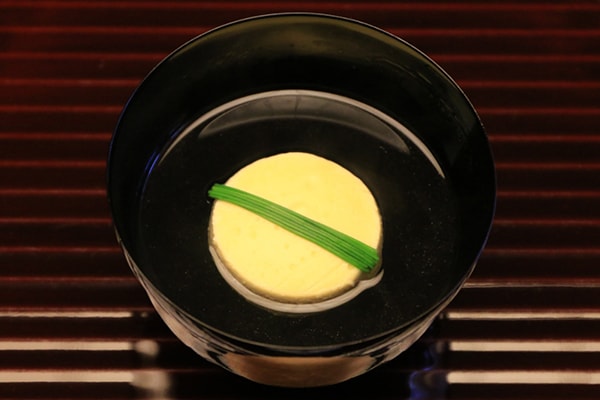
Uchiki’s dashi is beautiful and clear, with an amber tinge. We sampled several of his creations made with the dashi. The flavor is pronounced yet delicate and understated, and the rich aroma of katsuobushi and kombu fills the nostrils. It adds depth to any dish by enhancing the natural flavors of the other ingredients. Indeed, dashi is the embodiment of Japanese cuisine.
It’s interesting that something so simple? dashi is, after all, essentially flavored water?has become so central to Japanese cuisine and culture. Our visit to Sagano demonstrates that the best dashi is truly a work of art.
From the humble home to the finest of restaurants, dashi is the bedrock of Japanese cuisine, the distinctive flavor base with the perfect combination of flavors and aromas that enhances any dish. While you may never encounter dashi on its own, it is always there in the background. Japanese food would not be the same without it.
It is surely no exaggeration to say that Kyuemon katsuobushi, prepared by experienced craftsmen using traditional techniques, is an integral part of Japanese cuisine today.

